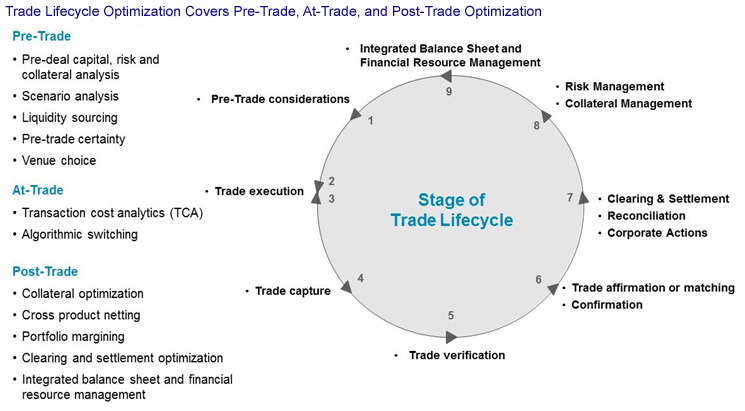The Age of Optimization in Corporate Actions Automation
Abstract
The financial markets continue to face challenges that drive reconsideration of corporate actions technology. Declining margins, regulatory pressures, and market infrastructure changes are forcing firms to create long-term transformation initiatives that will ultimately improve efficiency across the entire enterprise.
Celent predicts that trade lifecycle optimization (TLO) will gain traction. TLO is a conceptual framework for addressing challenges and opportunities across the front, middle, and back offices of securities trading, operations, and IT. TLO offers more informed decisions, which lead to multiple levels of efficiency, including trading efficiency, collateral efficiency, and clearing and settlement efficiency. Corporate actions automation tools fit squarely into the TLO framework because they allow firms to optimize post-clearing and settlement operations.

“There are several benefits to corporate actions automation, and although these benefits have long been recognized, many firms have struggled to quantify them,” says Isabella Fonseca, Research Director and coauthor of the report. Corporate actions should no longer be thought of as a discrete process affecting only the back office. Budgets for corporate actions should move beyond the operations staff. Many firms should consider corporate actions part of a larger project relating to data centralization and repository.
“Corporate actions automation must be considered within the context of long-term transformation projects that emphasize efficient management of data and the trade lifecycle. It is within this context that firms and vendors should be approaching corporate actions automation,” adds David Easthope, SVP of Celent’s Securities & Investments Group and coauthor of the report.
This paper seeks to provide a framework for calculating the return on investment for firms. Additionally, this report addresses spending for corporate actions from a vendor point of view.

